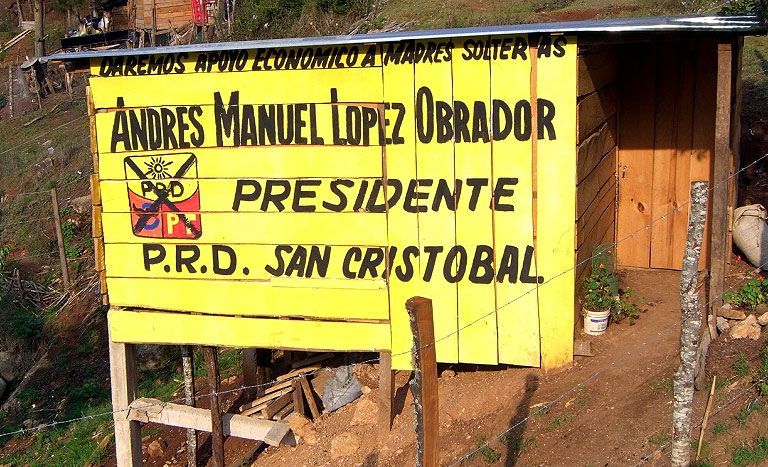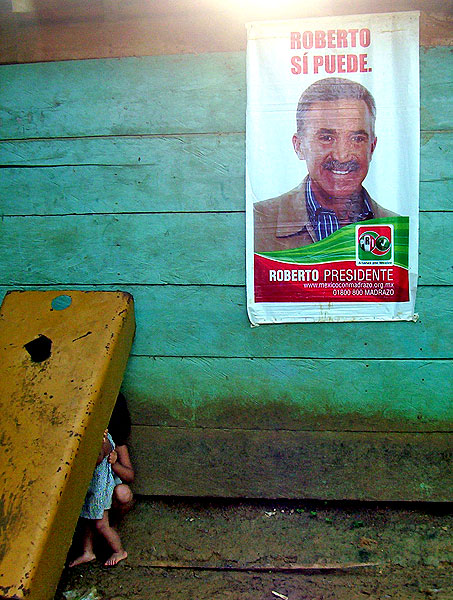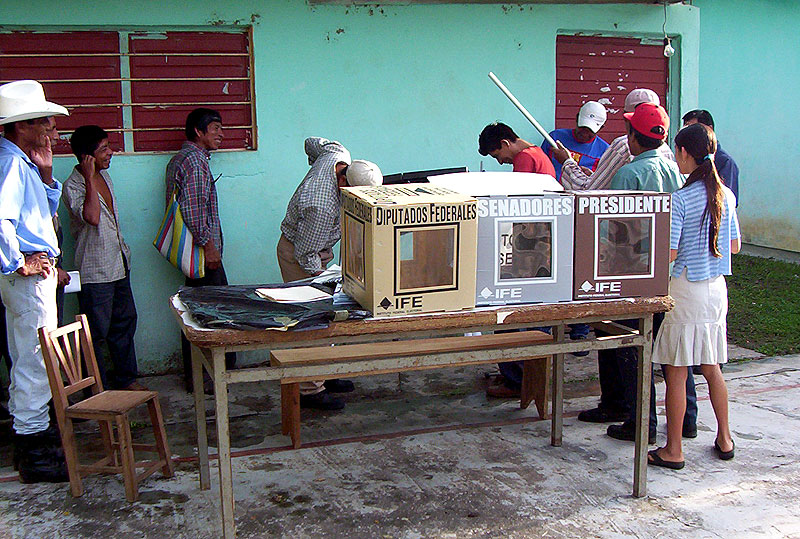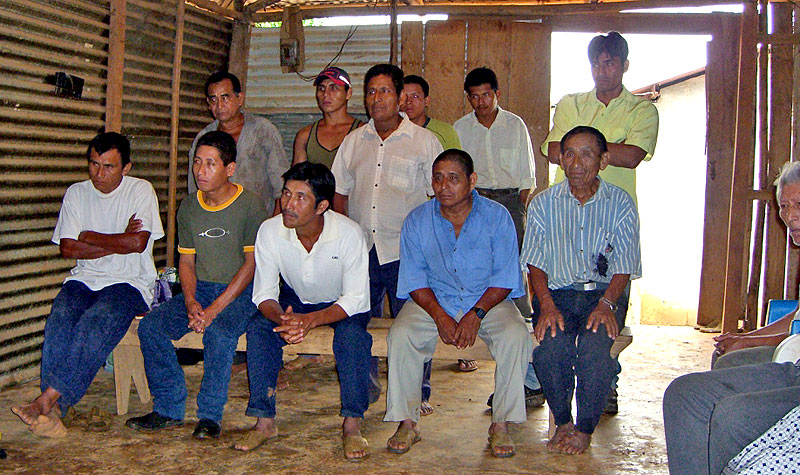SIPAZ Activities (January 15 – March 2006)
28/04/2006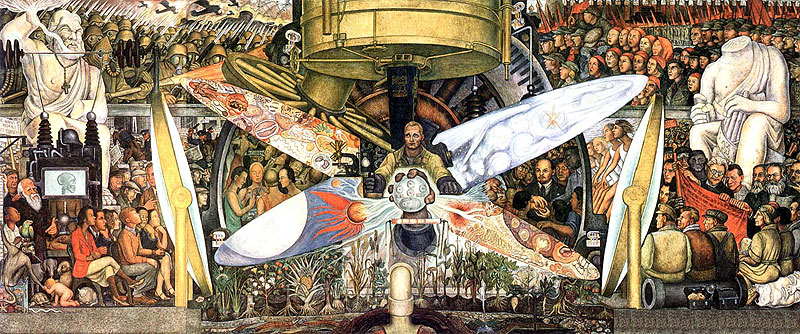
UPDATE : Mexico – Two presidents?
30/11/2006For someone from outside, this place can seem somewhat surreal, almost like traveling through time. We find ourselves in a community where wood houses are the majority and pigs, chickens and other animals roam freely. At night you can hear the howler monkeys. At first, the only things to remind us of the date, July 2nd, 2006, are the posters of the presidential candidates that hang from the trees.
Just before 9 am, the representative from the IFE (Federal Electoral Institute) arrived at the school field where those in charge of the polling place were busy setting up. He seemed stressed by the fact that the voting lists had not yet arrived, and that officially, the voting should have started at 8 am. The issue is that there are “two times”: “Fox’s time” (daylight savings time) and “God’s time” (in the communities, they do not follow daylight savings time). According to “God’s time,” it was only 8 am. Fifteen minutes later the polling place was opened and the first people arrived to vote.
We arrived there early to observe the start of the electoral process. From afar, we saw those in charge struggling with the table and the three ballot boxes (for president, senators, and deputies). This made us think of the furniture you buy that is supposedly easy to assemble at home, but is always far more difficult than the instructions let on, with some screws inexplicably remaining.
While the people were approaching to begin voting, the officials counted the ballots twice, posted signs about how to vote, and filled out a huge quantity of paperwork.
At each polling place, there were also observers representing the political parties present to monitor the electoral process. In this particular community there were only observers from the PRD (Party of the Democratic Revolution) and the PRI (Institutional Revolution Party). The PAN (National Action Party) does not have much of a presence in the communities of this region.
The environment was almost festive. In the years of greatest conflict in the Northern Zone of Chiapas, from 1995- 2000, the political polarization was very intense: with, on one side, PRI supporters, which included members of “Development, Peace & Justice,” a group accused of paramilitary activity, and on the other side, the “opposition” (primarily PRD members and Zapatista support bases). The memory of that period of time, during which more than 100 opposition members were killed or disappeared, remains etched in the minds of the people. The fear instilled in those years remained present in the days and weeks before the election. We were thanked for our presence, as it helped them to feel safer. In this situation, the people were very clear that they did not want any problems. For example, the Zapatista support bases stated: “we will not let ourselves be provoked, and we will not provoke others, and we just hope that they will respect our decision not to vote.”
In the Northern Zone no major incidents were reported. Some difficulties arose because of the distance to the polling places or because of the fact that some displaced people, most of whom have returned to their communities, had to vote in predominantly PRI communities, in many cases the home communities of those they considered to be their aggressors. People from one community went to the closest polling place, only to find that their names did not appear on the lists. Without this seeming “abnormal” to them, they then went to the next community to see if they could vote there. This is notable because what is assumed to be normal is actually a situation of “electoral offenses,” such as the buying or coercion of votes in the context of the campaigns. Another aspect pertinent to the majority of communities is that there is rarely truly free and secret voting. The first reason for this is that everyone knows everyone else. The second reason is that frequently the decision for whom to vote is decided collectively in the community’s assembly.
In the district that pertains to the Northern Zone, the results show the Coalition for the Good of All (which includes the PRD, the Workers Party and Convergence) as the winner, as was the case throughout Chiapas. Chiapas had a relatively high voter turnout with 49.37% of voters voting.
| Total states votes |
% | |
 |
186.373 | 17.66 |
 |
340.865 | 32.30 |
 |
460.910 | 43.68 |
 |
6.922 | 00.65 |
 |
14.040 | 01.33 |
 |
7.555 | 00.71 |
 |
38.374 | 03.63 |
| Citizen Participation |
49.37 % | |
There is major concern in the face of the upcoming state elections (August 20th), with the candidates “closer,” leading to potentially more “aggressive” campaigns. As they say in the communities, “this is just the beginning…”

